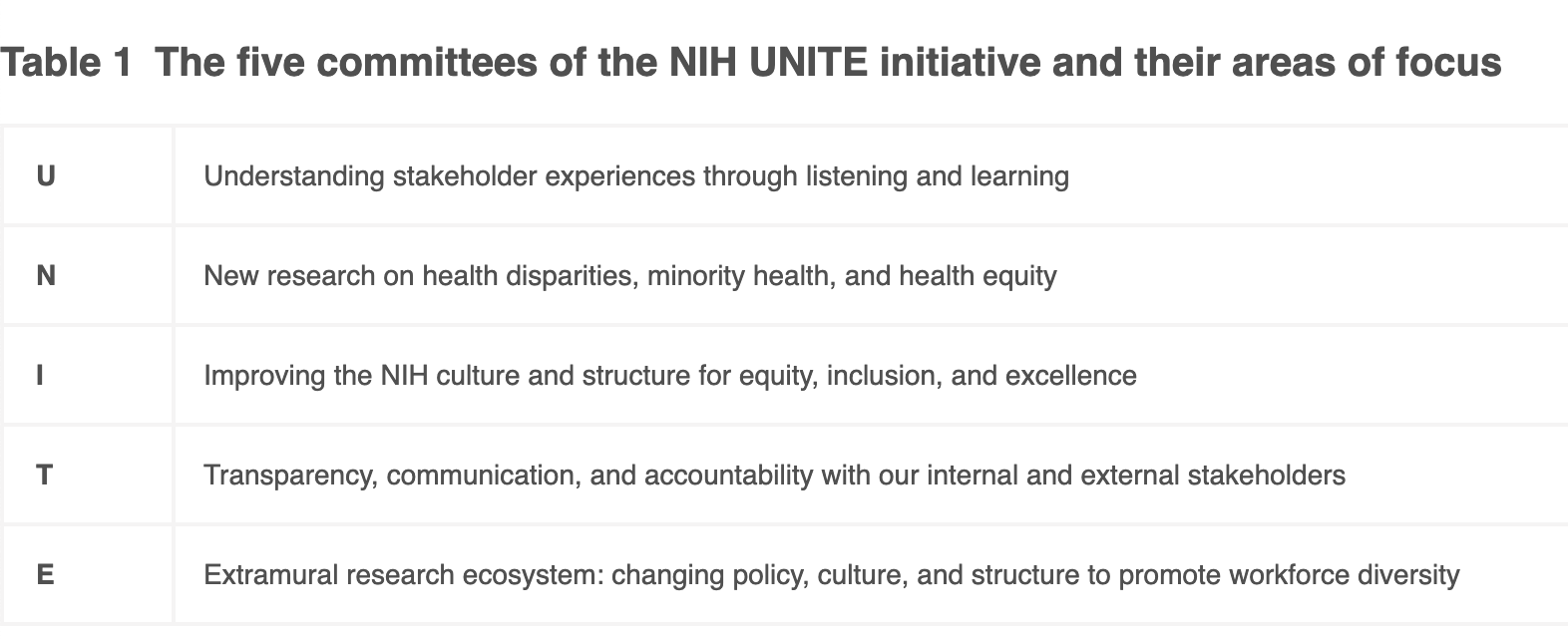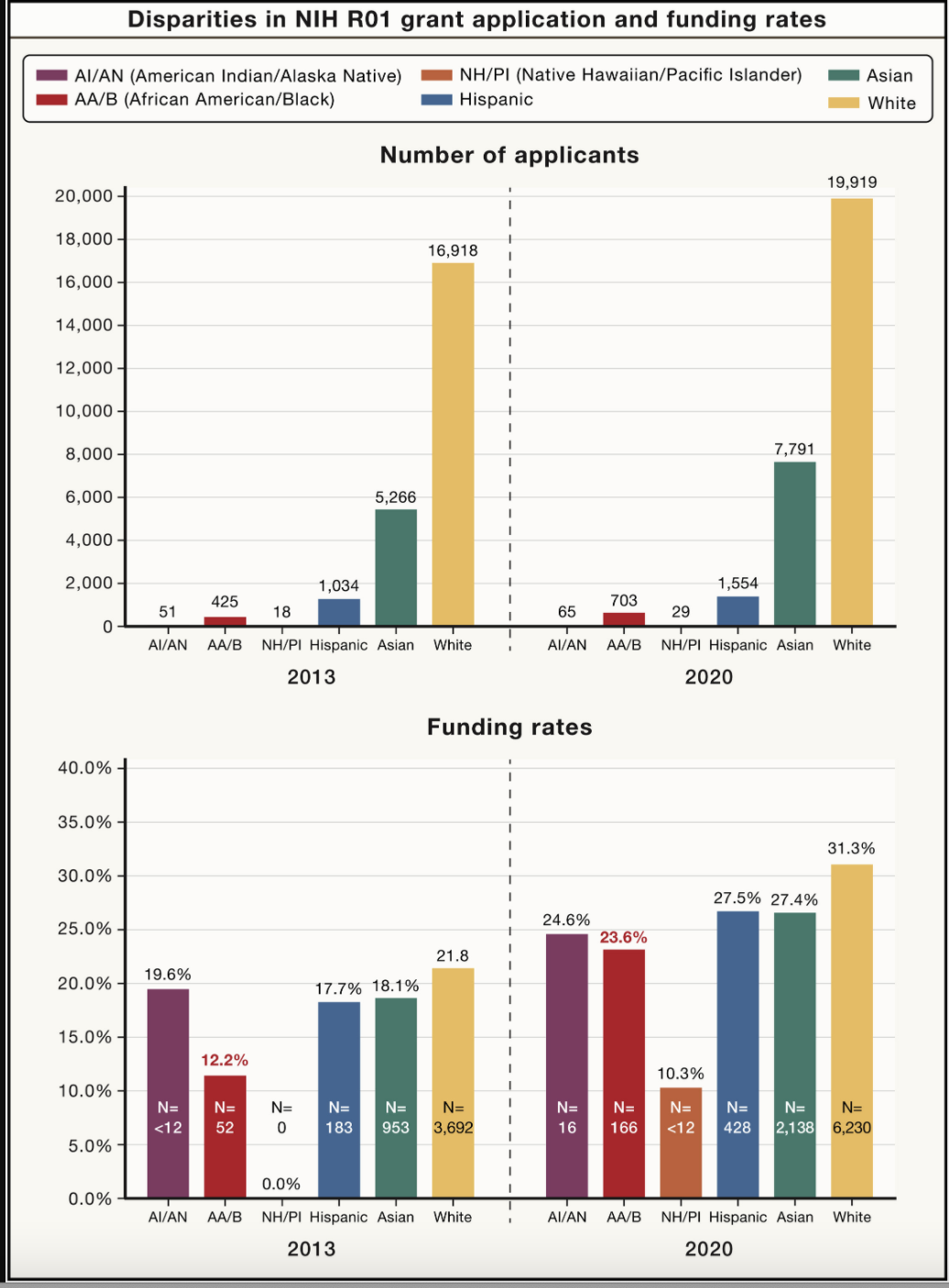
NIH Director Dr. Francis Collins holds up a model of the coronavirus as he testifies before a Senate Appropriations subcommittee in May. Sarah Silbiger / Pool via AP
NIH Aims to Boost Diversity and Inclusion Within Its Biomedical Workforce
The agency said the changes, which are part of a larger plan to combat structural racism in biomedical research, are “long overdue.”
The National Institutes of Health on Thursday outlined a framework for increasing diversity and inclusion among its biomedical research workforce, among other actions to address structural racism in the industry.
NIH officials, scientists and staff, including NIH Director Dr. Francis Collins, published a commentary in Cell, a scientific journal, outlining what the agency's UNITE initiative, launched in February, has been doing. The initiative brings together the agency’s 27 institutes and centers and is focusing on NIH’s own workforce, the external biomedical workforce and the research the agency supports.
“The time for NIH to take an active stance against structural racism is long overdue,” said the commentary. “Among the challenging issues that the agency must confront head on are a failure to acknowledge first-hand accounts of racism in the workplace reported by people of color throughout the biomedical research enterprise; a long-standing failure to attract, retain, and promote to the highest levels scientists from underrepresented racial and ethnic groups in the biomedical research workforce; persistent disparities in the success rates for grants supporting Black scientists; lack of transparent race-based demographic data linked to grant success and funding rates; ‘siloing’ of NIH diversity initiatives rather than including them as a fundamental element across NIH; and significant underfunding of research on minority health, health disparities, and health inequities.”
There are five committees within UNITE, which are shown below by the chart from NIH:

The following are actions in progress by some or all of the committees: creating a strategic plan to address racial, ethnic and gender disparities at NIH; expanding the agency’s Distinguished Scholars Program (an initiative for principal investigators in underrepresented groups) to include senior investigators; developing a process to gather and make public demographic information on the biomedical research workforces; appointing a senior staff member at each institute and center to be in charge of diversity, equity and inclusion; and closing the gap in success rates for obtaining grants between Black and white applicants.
The charts below show that while application and funding rates for underrepresented groups increased slightly from 2013 to 2020, “further work remains,” said NIH.

Among NIH’s own workforce, 44.9% were racial or ethnic minorities as of March 2021, up from 38.17% in September 2006, according to data from the Office of Personnel Management.
In March 2021, 59% were female, compared to 58% in September 2006. (These percentages represent the workforce overall, and therefore do not necessarily reflect the positions NIH leadership is targeting with its new initiative).
UNITE already published a request for information seeking input on ways NIH can improve diversity and inclusion in research and how it can expand research on health inequities and disparities. It also published a funding opportunity announcement by the National Institute on Minority Health and Health Disparities, “soliciting investigator-initiated projects to understand and address the impact of structural racism and discrimination on minority health and health disparities with a commitment of up to $30 million,” said the commentary.
It noted that the initiative furthers President Biden’s executive order that requires agencies to use the federal government’s policies and programs to support underserved communities and advance racial equity.
“2020 will be remembered not just for COVID-19 and the devastation created across the world, but also for the realization, following the killing of George Floyd, that structural racism is a reality in the United States of America, and that our more than 400 years of racism, which began with slavery and even before that, with the treatment of Native Americans, is a history that we have not really gotten past,” Collins told Government Executive in an interview in March a few days after announcing UNITE. “It influences our own biomedical research community in ways that we maybe have preferred not to look at, but we need to look at.”
Some are saying the new plan doesn’t go far enough, however, Stat News reported on Thursday.
“There is nothing in that plan that is transformational,” Omolola Eniola-Adefeso, a Black professor of chemical engineering at the University of Michigan, who has been critical of funding disparities at NIH in the past, told the outlet. “Health care disparities are important, but Black [principal investigators] are also interested in robotics, gene therapy, and CRISPR [genome editing]. In some ways, that’s pigeonholing us. That’s saying you should tell a young Black girl who wants to study nanotechnology to study health disparities instead.”







